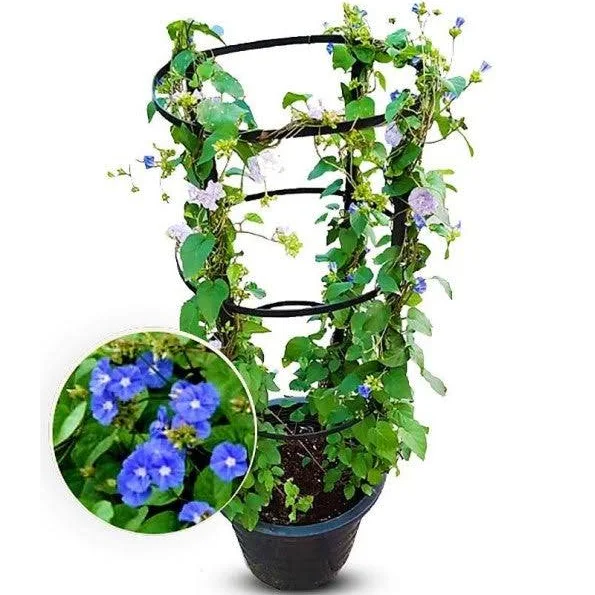No products in the cart.
| Scientific name | Quisqualis indica |
| Common name | Rangoon creeper |
| Temperature requirement | 25-35 °C |
| Humidity | 40-50% |
| Light | Full sun to partial shade |
| Watering | Water everyday &keep moist |
| Pests | Scale and caterpillar |
| Pet friendliness | toxic to pets and humans |
| Maximum plant height | 900cm |
| Potting mix | Potting soil/red soil/manure/perlite |
| Pot requirement | Good drainage&repot every 1-2 years |
| Nutrition | Apply manure for first 15 days and npk for next 15 days |
| Pruning & training | Remove dead & diseased leaves with sterile shears |
| Common color & season | White, pink, and red flower |
| Description | Rangoon creeper grows wild in southeast asia from myanmar (burma) to the philippines, and it is seen as an ornamental climber in gulf regions. It may become naturalised in humid climates, forming thickets in secondary forests, but will not invade intact ecosystems. The generic name is the latin question what is that?, While the specific name describes its origin from tropical asia. This ligneous vine may quickly reach a height of – 8-9 metres. It is cultivated for attractive, fragrant flowers that open pale pink, turning to intense red while blooming. In open clusters, the star like flowers are arranged on slender, long funnels appearing mainly in summer. They develop into winged, black fruits some 3 cm in size. The leaves are up to 15 cm long, and arranged oppositely along the woody twigs. Light frosts are not harmful, while the shrub recovers in spring if it has died back or following hard pruning. Planting locations should be in full sun to partial shade. Some drought is tolerated in nutrient rich soils that should be well drained. The ground should not be compacted, and can range from acidic to alkaline. Being resistant to urban microclimates and limited in size, quisqualis makes an ideal low maintenance vine in gulf regions. It is grown widely in private gardens and public parks for its attractive, scented flowers. Kept under control by clipping, it also performs well in containers. Double flowers are born on a cultivar named ‘thai hybrid’. |
Additional information
| Choose Height | 80cm-100cm, 160cm-180cm |
|---|




















Reviews
There are no reviews yet.